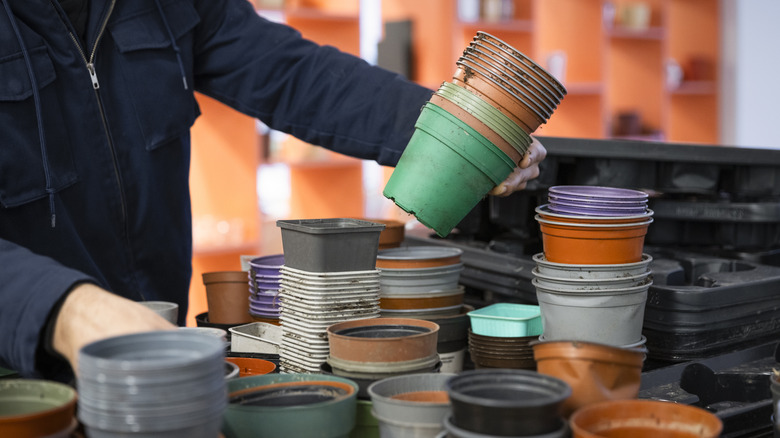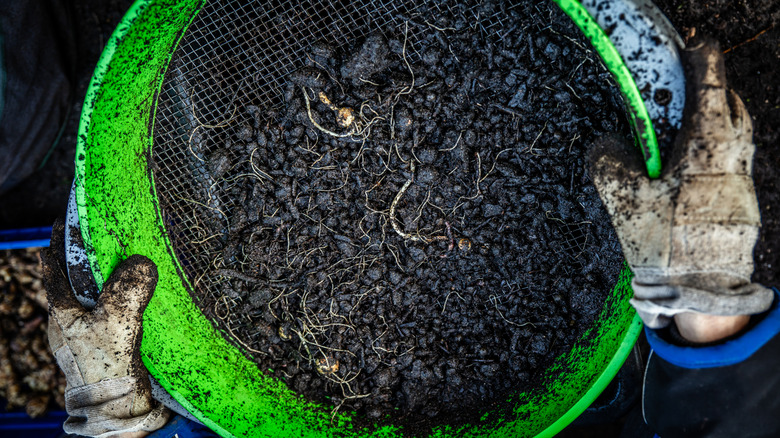Don't Throw Out Plastic Nursery Pots — use Them As A DIY Garden Sifter
America's gardening industry is huge in both domestic developments and international trade; the U.S. Census Bureau reported nearly $1 billion accrued via fertilizer exports alone in 2019. Individual household gardeners find themselves hard at work as weather shifts during the spring and summer seasons, digging out weeds and visiting local plant sales for all the pieces they need to create a cohesive front garden. With every new plant you bring home undoubtedly comes another plastic nursery pot. However, it can be challenging to recycle these non-biodegradable products, so instead of throwing your extras away, you should consider using them for other important garden tasks, such as sifting.
Your standard plastic nursery pot has holes cut into the bottom, allowing water to drain out so the plant's roots can also get fresh air. This also makes the design perfect to have a cup with which to scoop up your growing medium (or important gardening materials like fertilizer and compost) before immediately sifting it back out with a quick wave of your hand. Other granular additions to your garden, like animal repellent, are also perfect candidates for using a DIY garden sifter, which doubles as a way to filter out obstructive items like large rocks.
Why do you need a DIY garden sifter?
While the easy use case for leftover plastic nursery pots as DIY garden sifters is obvious, burgeoning gardeners might not know why it's important to sift your soil, fertilizer, or compost to help grow healthier plants. Different soil textures promote different kinds of growth, as hydrangeas (Hydrangea macrophylla), for example, thrive in moist soil that retains water, whereas lavender (Lavandula angustifolia) requires dry, well-drained soil. Sifting different amounts of the primary soil particles — sand, silt, and clay — can change its consistency. There are plenty of simple hacks out there to sift apart lumpy garden dirt, too.
Meanwhile, sifting is an incredibly important step for applying compost. As your homemade DIY compost bin breaks down biodegradable materials like food leftovers, you eventually have to sift out the smaller material that's actually useful for plant growth before sending the rest back to be composted further or used as garden mulch. If you don't have a huge amount of compost, scooping some into a plastic nursery pot could be the ideal way to sift out just enough compost for your garden. Having a DIY garden sifter is also important if you want to reach a consistency that's good for soil testing. Testing the soil for its pH level or lacking nutrients is how you know what other materials and fertilizers need to be mixed into your garden, and a plastic nursery pot sifter can even help you evenly work in those new components.

